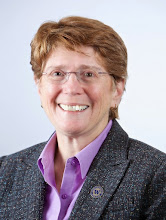 Reflecting the change in Washington State law making it legal for adults to possess small amounts of marijuana and use it in private, some law enforcement agencies are retraining their drug-sniffing dogs not to alert for marijuana.
Reflecting the change in Washington State law making it legal for adults to possess small amounts of marijuana and use it in private, some law enforcement agencies are retraining their drug-sniffing dogs not to alert for marijuana.
Local stories include:
The
Washington State Criminal Justice Training Commission has
standards for certifying dogs with different specialties (patrol, explosives, narcotics). As of January, narcotics dogs will be trained to detect cocaine, crack cocaine, methamphetamine, and heroin, but not marijuana.
The Supreme Court has issued two dog-sniff cases this Term. In
Florida v. Harris (Feb. 19, 2013), the Court unanimously upheld the admission of evidence found in a truck after an alert by a trained dog (who had previously been reliable). SCOTUSblog's summary of the case is
here. In
Florida v. Jardines (March 26, 2013), the Court found that using a drug-sniffing dog on the defendant's front porch was an illegal search. See Adam Liptak,
Justices, Citing Ban on Unreasonable Searches, Limit Use of Drug-Sniffing Dogs, N.Y. Times, March 26, 2013.
Narcotics dogs do not always perform accurately. In fact, a study of Chicago-area traffic stops by the
Chicago Tribune
found that drugs were found in just 44% of the vehicles
where dogs alerted—and in
only 27% of the vehicles with Hispanic
drivers. Dan Hinkel & Joe Mahr,
Tribune analysis: Drug-sniffing dogs in traffic stops often wrong,
Chi. Tribune, Jan. 6, 2011. An academic study about the same time
"found that detection-dog/handler teams erroneously 'alerted,' or
identified a scent, when there was no scent present more than 200 times —
particularly when the handler believed that there was scent present."
Explosive- and drug-sniffing dogs' performance is affected by their handlers' beliefs, UC Davis Health System, Feb. 23, 2011. The paper is: Lisa Lit et al.,
Handler Beliefs Affect Scent Detection Dog Outcomes, 14 Animal Cognition 387 (2011).
The current issue of the
Oregon Law Review (available free in PDF) is a symposium on drug policy. It includes Jane Bambauer,
Defending the Dog, 91 Or. L. Rev. 1203 (2013). The author says "This short essay makes the uneasy case for the narcotics dog. Those in favor of U.S. drug enforcement presumably need no convincing, but this Article intends to address the concerns of skeptics who worry about unjust drug enforcement, or who believe that criminalization is just plain bad policy. Dogs are just the first generation of a new set of law enforcement tools that can help us divorce criminal investigation from the bias and discretion that comes with traditional policing."
Id. at 1204.
Washington readers might be particularly interested in Michael Vitiello,
Joints or the Joint: Colorado and Washington Square Off Against the United States, 91 Or. L. Rev. 1009 and Michèle Alexandre,
First Comes Legalization, Then Comes What? Tips for Washington and Colorado to Help Break the Cycle of Selective Prosecution and Disproportionate Sentencing, 91 Or. L. Rev. 1253.
Graphic: mw












